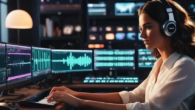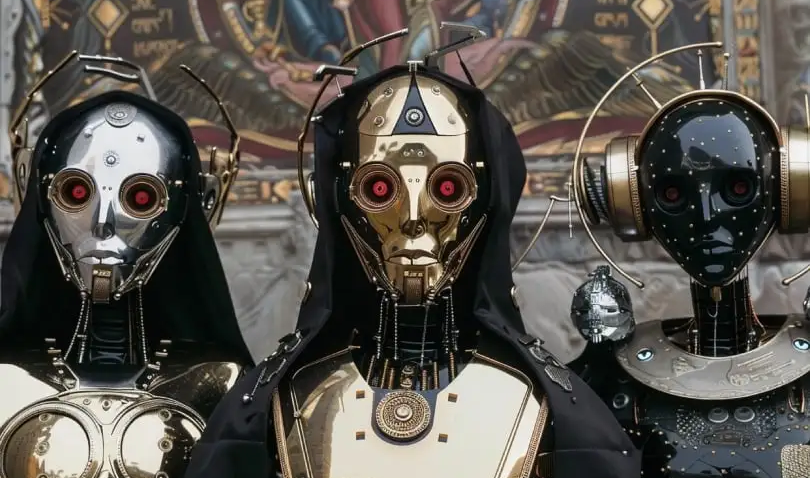
Three things that make artificial intelligence work: the “Holy Trinity” of AI
How did you learn about AI for the first time?
A lot of people thought it was a robot from a movie.
Stanley Kubrick’s movie “2001: A Space Odyssey” came out in 1968. A robot named “HAL” was in charge of a rocket that quickly stopped working, showing a possible bad future for AI and robots.
When I saw Star Wars for the first time in 1977, I was taken to a new world where robots and other strange beings lived.
When we thought about AI and how it would show itself to the world, we usually imagined a computer, robot, or creature that could do what we told it to do (if it was nice).
The Jetsons, an old TV show that came out in 1962, showed what the world would be like in 2062.
It showed a world in the future with live calls and conferences, robots and automation, smart homes, wearable tech, and even drones and flying cars.
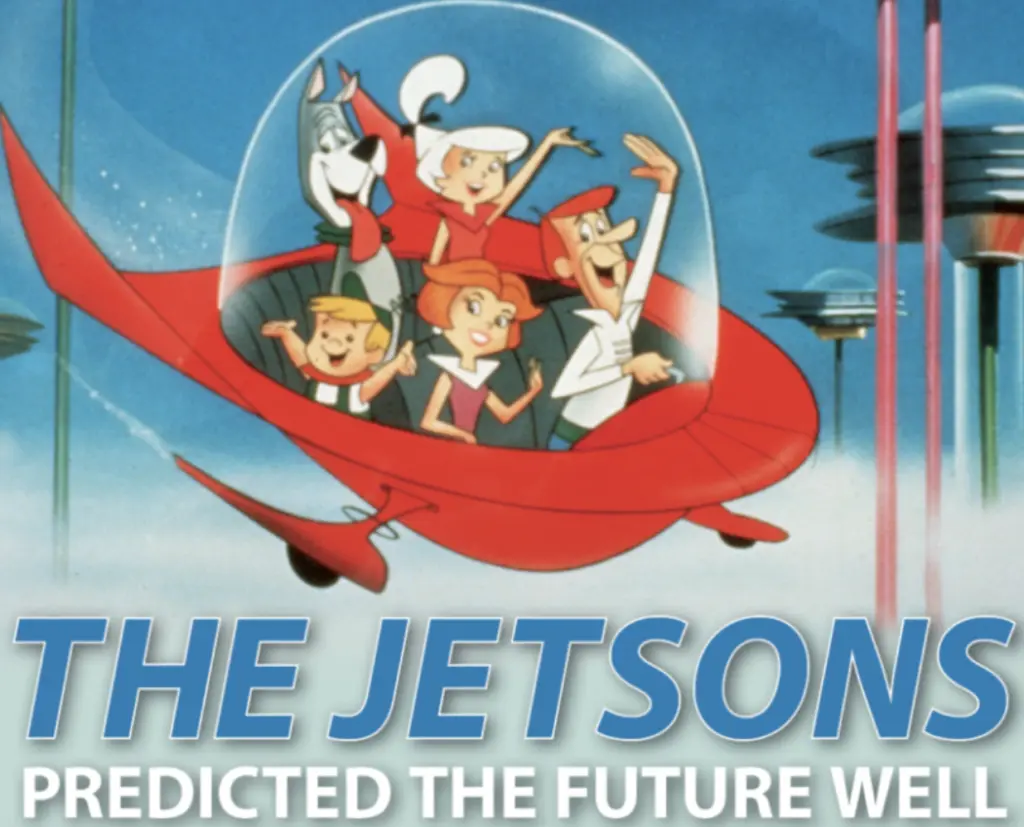
The Star Wars robot “R2-D2” was a “droid” that looked like a small trash can that could turn around and talk. But now we want a form that looks more like a person.
Instead, we got something that looked a lot like a dull message box.
ChatGPT made it easy to ask questions, kind of like how Google searches work. You still type in a question and get a bit of writing, a picture, or even a video in return.
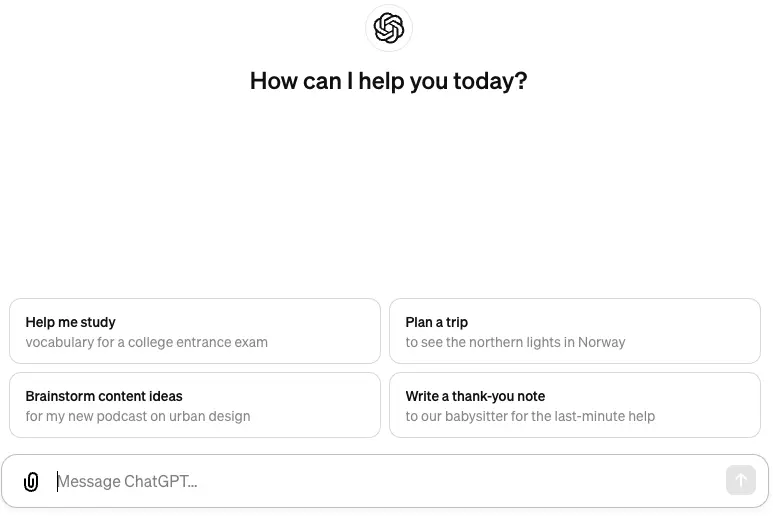
AI these days is a bit dull and unimpressive. It turned out to be a nerd in a suit who answered questions instead of the beauty you thought you were going on a date with.
But once you turn it on, the magic of its abilities shows. It can do things that would have taken you days, weeks, or even months to do.
AI’s “black magic box”
There is magic in the world. But we don’t think about it much.
At 40,000 feet, we drink champagne while sitting in planes that are a cosy 75 degrees, even though it’s usually minus 70 outside. In less than 24 hours, we can get to the other side of the world. It took the Mongols months to go through a few countries and maybe even attack Europe.
Anyone can use their phone to get an answer to any question they have in a matter of seconds. Avoid fights in the pub.
We want to drive to a place we don’t know in a different country, and our smartphone with GPS helps us find our way. When I got lost and ended up in the ghetto instead of the hotel, I would often flip my old paper map over and throw it out the window.
It only takes a few clicks to send money to someone on the other side of the world. Going to a real bank is something I don’t do very often anymore.
When we order something on Amazon, it comes the next afternoon. Who wants to go to a store, find that they don’t have what they want, and have the salesperson talk to their cute coworker while ignoring you?
We have a boss who wants an article or a business plan made. ChatGPT can do it with just a few quick questions, and we get the answer right away.
We now live in the “AI Oracle” era. The robots do what we tell them to.
How does it do its job?
There are three main things that run the machines behind the scenes. You can call it “artificial intelligence” when it’s dressed up for a formal dinner.
Part 1: Software
The first of our brave digital heroes is something called a computer language. It’s geeks’ language, so they might as well talk in tongues.
Computer software.
The intelligence and brute power of the Large Language Models (LLMs) are used to process 1.7 trillion parameters.
It is possible for a model to be more complicated and expressive when it has more parameters. It can also handle more data. It gets smarter as it gets more info.
And this is where the raw logic of AI is made, from algorithms that learn like a kid on a sugar high to models that can tell the future with the certainty of a soothsayer with years of experience.
The important question is…
Who was the first person to let the horseman of the AI end of the world loose?
It wasn’t perfect, but it got there before Google. The big search engine didn’t want to share something it already had with the public because it would hurt its image too much.
But maybe AI has already lost because it hasn’t come up with new ideas or been put into the wild.
The major player
OpenAI launched ChatGPT in November 2022, and in less than 8 weeks, it had 100 million users. It is now a big player.
It made AI easy for everyone to use by making a simple user interface. A world of formulas and complexity that was kept secret was boiled down to a simple prompt box.
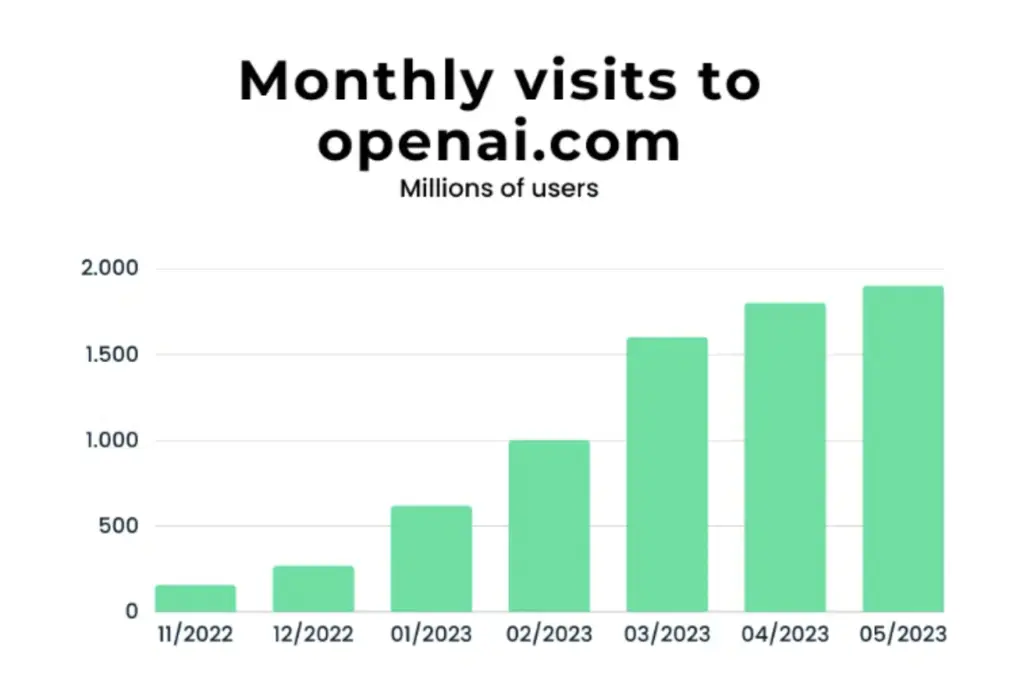
It made $200 million for OpenAI in 2022. It made $2 billion in sales in 2023. A 1000% increase in just one year. Its market worth right now is $86 billion.
Part 2: Hardware
The next part is hardware, which is what AI needs to do its work. Actually, these aren’t any old circuits and silicon. These are supercomputers, GPUs (Graphics Processing Units) that do math faster than a bored tax accountant, and neural network chips that dream about electric sheep and never sleep.
Without these huge machines, our software would be like a racecar driver who is ready for the event but doesn’t have a car. It would look good but get nowhere.
Some questions about hardware
Who is the big player here, and who wants to be their king or queen?
High-end graphics processing units (GPUs) were first made for computers used for games.
The main player
Without a doubt, this is Nvidia. Its rising power is clear from the fact that its sales have grown every year since 2020.
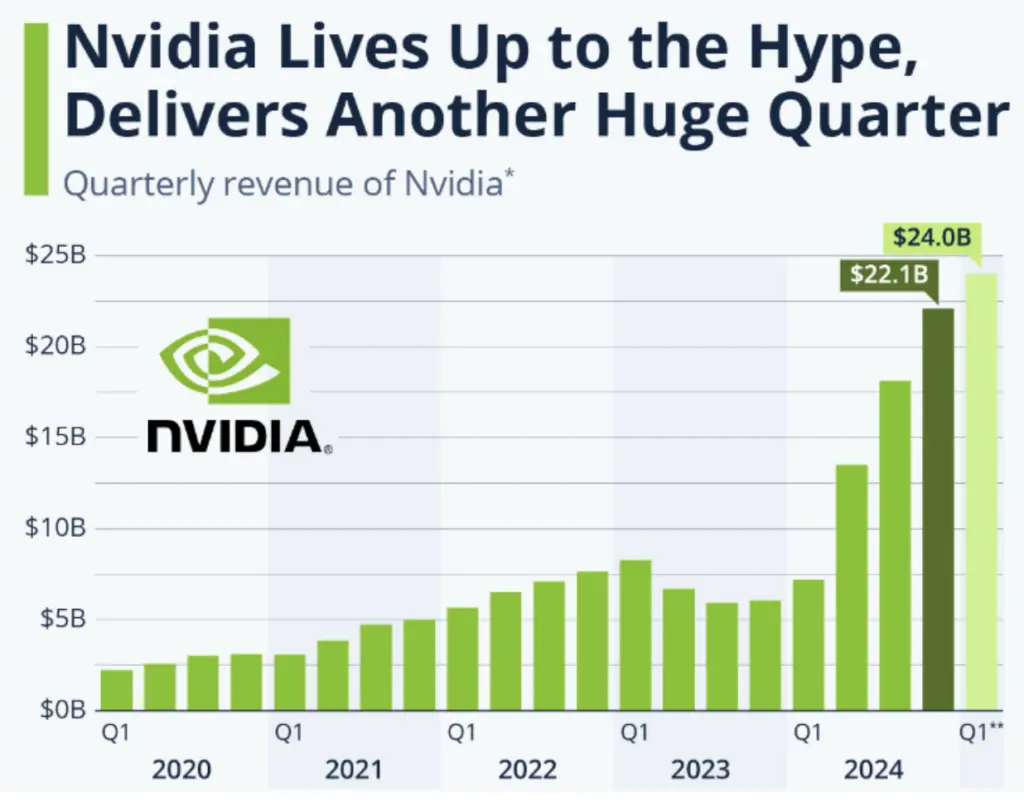
More Nividia numbers:
- For the past year, Nvidia’s sales have gone up 262%, to just over $60 billion.
- With a market worth of just over $3 trillion, it is now the third most valuable stock in the world, just behind Apple by $238 billion and ahead of Microsoft.
Third Pillar: Data
Finally, “Data,” which is what AI is all about.
The new oil in the world of AI.
This is the food that our digital monster eats, grows, and learns. AI learns from data; each bit is a lesson and each terabyte is a book of information.
The world through the eyes of our computer friend. AI would be lost without it, just like a stranger would be without Google Maps.
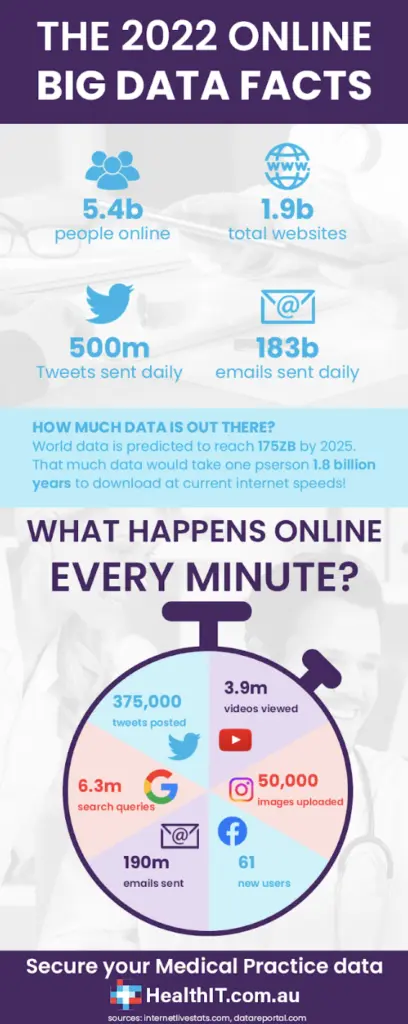
What’s the big question?
Do you have the data?
What is the answer? Nations and foreign businesses that can see the information of billions of people on Earth.
International Business Companies – Techno states
The global players are the big tech companies, e-commerce sites, data centres, and social networks. Together, they have more data and capital value than 95% of the world’s GDP.
In terms of wealth, these companies are bigger than countries. This isn’t the case anymore; Microsoft is now worth more than $3 billion in 2024.

What do they look like?
- Meta has 4 billion people around the world and growing.
- 40% of all online sales in the US go through Amazon.
- Apple: the App Store and your iPhone records
- Microsoft sells tools and hosts websites.
How many pieces of information do the top tech states gather?
They might know more about you than your family or friends. Oh, that makes me feel a little weird.
- Google gets 39 pieces of information about each customer, which is the most of any company.
- There are 24 pieces of information on Twitter.
- It has 23 data points for Amazon.
- Facebook gets fourteen
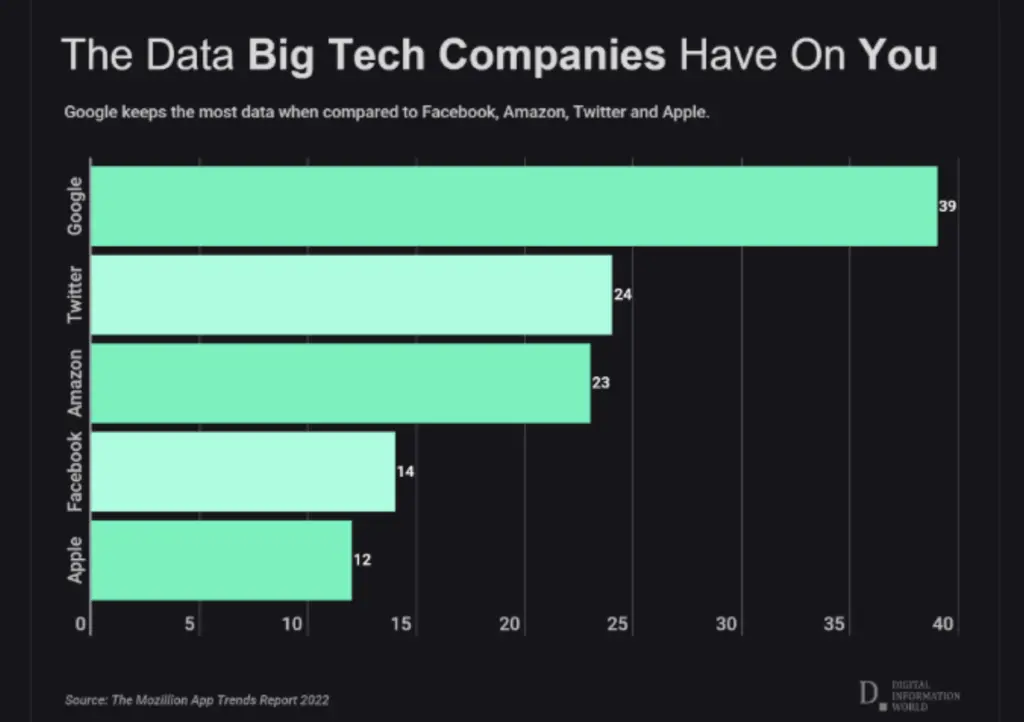
Nations – Political states
The monitoring state is still alive and well, and countries can get to a lot of data. Since China has become a monitoring state and has the second most people in the world, it may have the most valuable data.
There are many ways to collect data, such as through social media, financial data, or image data. CCTV is one of the kinds of vision technologies.
The size of the population lets you gather more data and knowledge, but you need the right technology. That is something that some countries do better than others.
- China: has 1.3 billion people. There are 200 million CCTV cameras in China. That means there are 14 CCTV cameras for every 100 people.
- USA: 400 million people live there. They have 50 million CCTV cameras, which is 15 cameras for every 100 people.
- UK – There are more than 7 million CCTV cameras in the UK. Only 7.5 cams are set up for every 100 people.
The last words
Software brings the smarts, hardware brings the muscle, and data brings the lessons learned from a billion lives. All of this will be shared on the open web.
Data about people is ready to be harvested.
Two ways to look at this info. To begin, it can help by doing good things with data.
That means better health and medical advances that will save a lot of lives and make us live longer.
On the other hand, it can be used against us by the government to spy on us, spread false information, and make us addicted to our phones.
We need to put up guardrails.
Each of us can choose how to play. Being aware is everything.
Now it’s your turn.











